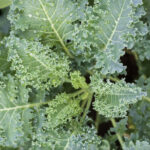 Marcella Hazan, the high priestess of classic Italian cooking, once said that she had never spent a day in her entire adult life without a hunk of Parmigiano Reggiano (Parmesan cheese) in her refrigerator.
Marcella Hazan, the high priestess of classic Italian cooking, once said that she had never spent a day in her entire adult life without a hunk of Parmigiano Reggiano (Parmesan cheese) in her refrigerator.
I suspect that my mother, Rose, would have been able to say the same thing. She and my father regularly bought a big wedge of Parmesan at whatever Italian grocery store they could get to at the time (Harrisburg once had its share of them), wrapped it carefully in several layers of waxed paper, foil and plastic, and chipped off chunks as needed. My mother always used freshly grated cheese for cooking, especially for her pasta and meatballs. That green canister of Kraft grated cheese never made it into our house.
Lately, I have been experimenting with different types of grating cheeses. Known as the Italian “grana cheeses,” they differ relative to sharpness, saltiness, consistency and moisture content. But each one is special in its own way and offers something a little different from traditional Parmesan.
Parmigiano Reggiano (the “real Parmesan”) and Grana Padano share the same origin: the fertile Po River Valley in northern Italy. Both of these are made from cow’s milk and are hard grating cheeses. However, Grana Padano has a more subtle taste and is less salty than Parmesan. More of it is produced, and so you will find it to be less expensive.
Pecorino cheese, most commonly sold in this country as Pecorino Romano (or just “Romano”), has a very distinctive taste. It can be salty, requiring an adjustment in the amount of other salt added to a recipe, and is usually described as a “robust” cheese. I substituted it once for Parmesan in my meatballs and my family noticed! Lou Di Palo, owner of the famous Di Palo’s Italian grocery store in lower Manhattan, says that, at one time or another, he has handled more than 100 varieties of Pecorino in his store. Unlike Parmesan and Grana Padano, Pecorino Romano is a sheep’s milk cheese.
Asiago and Piave are two types of what are known as the Italian mountain cheeses. These young cheeses may be aged as little as 20 to 30 days compared to some of the 36-month-old aged Parmesans. They are softer and easier to grate. I like them both and use them in salads, pastas and vegetables.
Years ago, in one of my first columns for TheBurg, I wrote about my mother’s meatballs. I am still making them and thought it was time to share the recipe again. It can be doubled or even tripled depending on need. Try using different grating cheeses from time to time. All of the ones mentioned above are good to try.
First, some important notes about making meatballs:
- Buy the freshest cheese you can find. A dried-out, shrink-wrapped piece of old Parmesan is not your best bet.
- Grate your cheese right before using. A box grater is fine but a food processer works, too.
- Add as much cheese to the meatball recipe as you like. My mother always fried a little bit of meat first to check if more cheese or salt was needed. I do, too.
- Save the cheese rind! It adds a wonderful taste to a simmering pot of soup like minestrone or pasta fagioli.
- Add any leftover grated cheese to mashed potatoes, a green salad, crostini or rice.
Rosemary’s Meatballs
Ingredients
- 1 ½ pounds of ground beef (I use ground sirloin, although many Italian cooks choose ground chuck, believing its fattiness provides more flavor.)
- ½ cup finely chopped Italian (flat-leaf) parsley
- ½ cup finely chopped sweet onion
- ¾ cup grated cheese (Parmesan, Pecorino Romano, Asiago, Piave or Grana Padano)
- 1 to 2 eggs, depending on size, lightly beaten
- ½ cup breadcrumbs (dried or freshly ground white bread)
- Milk, cream or half-and-half, just enough to bind the whole mixture together (I eyeball this—not too wet and not too dry.)
- ¾ teaspoon each of salt and pepper
Directions
- Mix all of the above ingredients together. Use a fork and a light hand to avoid compressing the meat.
- Place about ½ cup olive oil in a skillet (I use non-stick) and heat it until shimmering. When I make meatballs, I watch the heat very carefully and turn it down if I see that the meat is getting too brown.
- Fry a baby meatball first. Then adjust for salt and cheese as needed. I no longer have a little boy standing on a chair next to me waiting to taste, but I never miss this step.
- Roll the meat mixture into balls, sizing them to your liking. Mine are about 1 to 1 ¼ inch in diameter.
- Place them in the skillet and press down on each one slightly to ensure even cooking.
- When browned on all sides, remove the meatballs to a serving dish and keep warm. Sometimes, I serve them just like this, and other times I drop them into simmering spaghetti sauce.
- Serve them with pasta and your best red sauce or make delicious meatball subs.
I hope you venture out a little into the world of real Italian cheeses and give some new ones a try. And, I know it’s summer. But meatballs truly are a food for all seasons!





